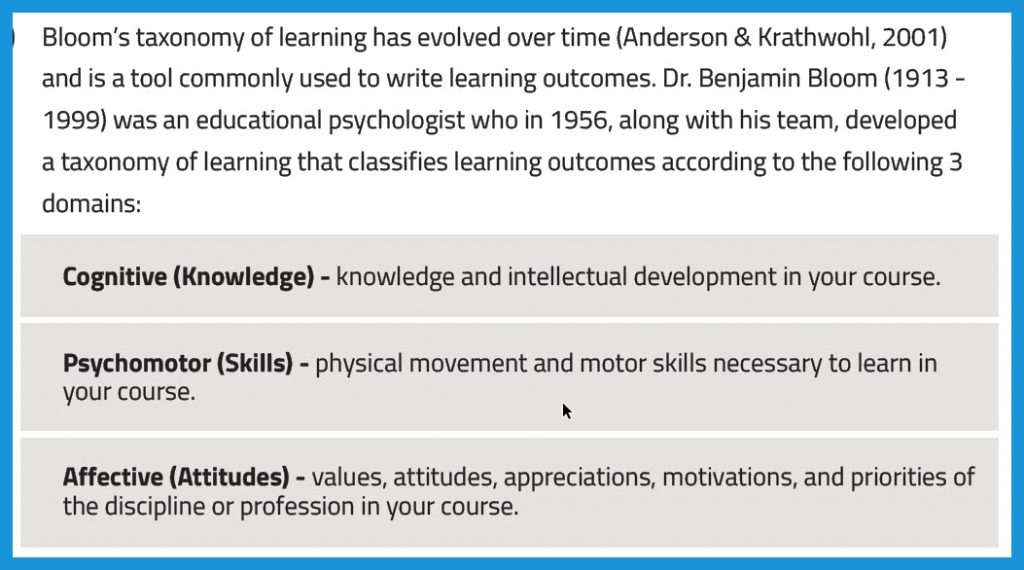Writing Learning Outcomes
Rationale – Why are learning outcomes important?
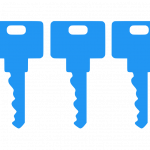
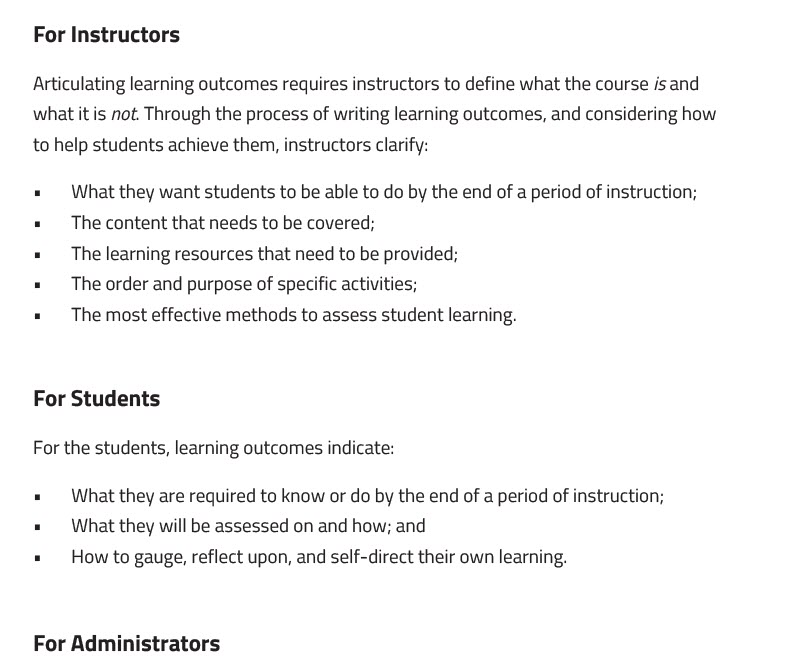
Definitions: What are learning outcomes?
- specify the “knowledge, skills, attitudes, competencies and habits of mind” of a ‘typical’ student on successful completion of a course (Lesch, 2012)
- define the scope of the course,
- use language that is comprehensible to students and prospective students before they undertake the course,
- are measurable, realistic and achievable within the context and timeframe,
- are inextricably linked to the learning outcomes of programs,
- are supported through teaching and learning activities,
- are demonstrated through assessment.
ACTIVITY: Learner Profile

Let the following questions guide you in your course outcomes planning:
- Who are your learners (e.g. needs, characteristics)?
- What is the position of your course relative to the entire program of study?
- What enduring understandings are desired? What are the important understandings we want students to truly grasp and retain after they have forgotten many of the details?
- What is important for students to know, do, or reflect on?
Basics: Well-written Course-Level Outcomes
- Define what students will be able to do in the time given (time-bound);
- State the specific behavior that students are expected to demonstrate (using a measurable/assessable verb);
- Can be assessed.

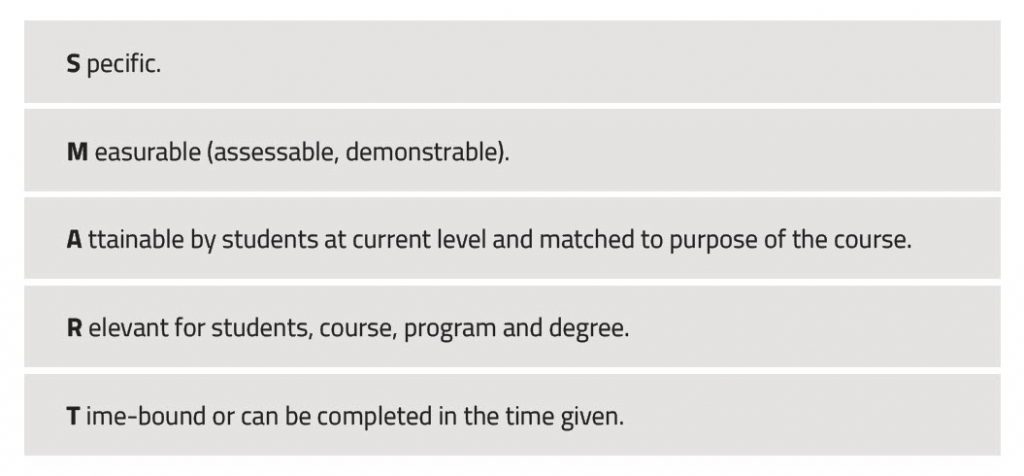
Exercise p. 22

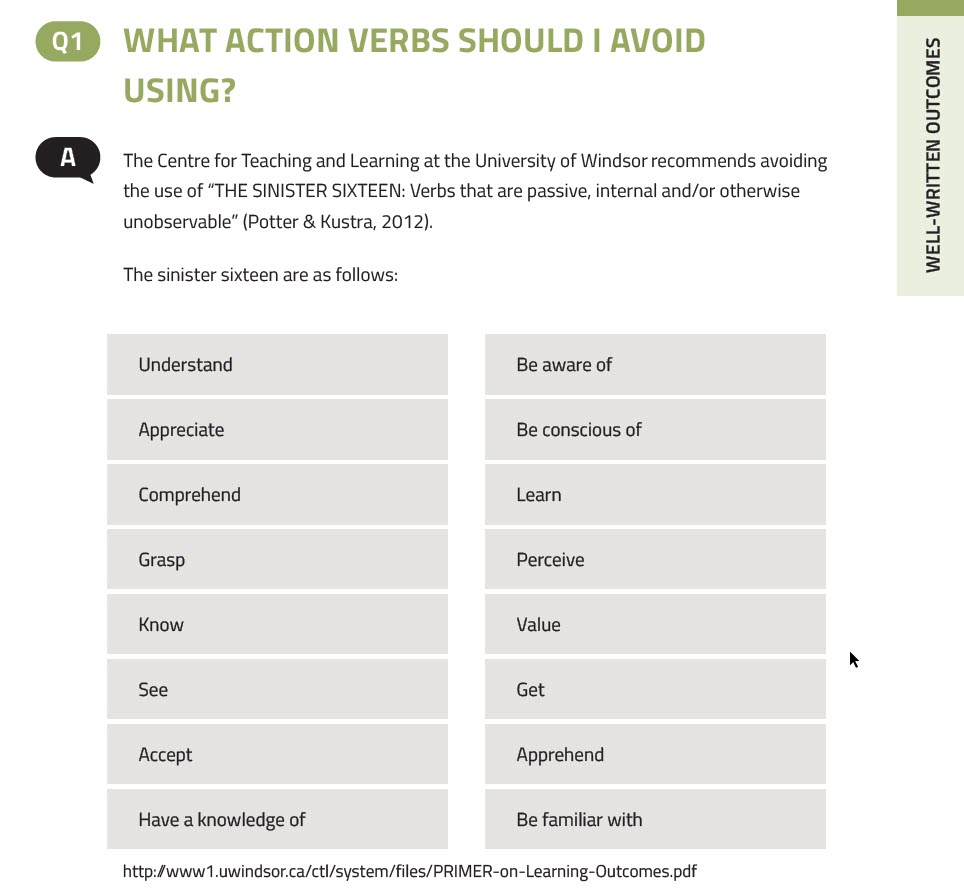
Writing Learning Outcomes

Two Frameworks
| Dee Fink’s holistic Significant Learning (2003; 2013)
|
Bloom’s Taxonomy of Learning (1956) (Anderson & Krathwohl, 2001)
|
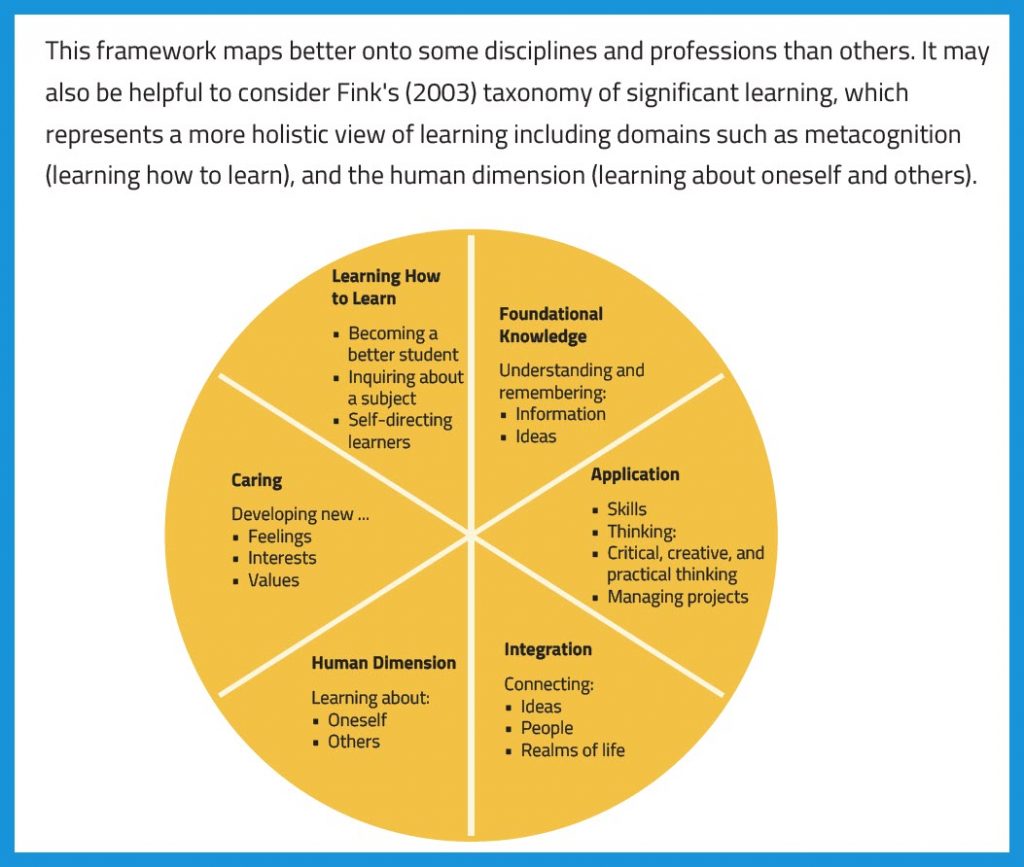
ACTIVITY: Writing Outcomes
Instructions:
STEP 1: Identify the knowledge, skills or attitudes you require students to demonstrate in your course.
STEP 2: Describe the learning outcomes using the KSA you just identified. You can use the following handout for more examples of measurable verbs correlating with either framework. Write your outcomes on post-it notes (one outcome per note).
Handout resource: Designing-SMART-Learning-Objectives (1)
STEP 3: Optional: Reach out to people in your department to get feedback on how your course fits within the program.
ACTIVITY: Align Outcomes with Learning and Assessment Activities
Consider the following questions to help you move from the articulated outcomes to the development of learning activities and assessments.
References:
Fink, L. D. (2003). Creating significant learning experiences: An integrated approach to designing college courses. San Francisco: Jossey-Bass.
Fink, L.D. (2013). Creating Significant Learning Experiences: An Integrated Approach to Designing College Courses, Revised and Updated. San Francisco, CA: Jossey-Bass.
Galley, R. (2012). The Design Studio / OULDI_Pedagogic_Aspects_v8_Release.pdf. Retrieved December 4, 2019, from http://jiscdesignstudio.pbworks.com/w/file/60619333/OULDI_Pedagogic_Aspects_v8_Release.pdf
Greenleaf, E. (2008). Developing Learning Outcomes: A Guide for University of Toronto Faculty. Centre for Teaching Support & Innovation, University of Toronto, Canada. Retrieved from: http://teaching.utoronto.ca/wpcontent/uploads/2015/08/Developing-Learning-Outcomes-Guide-Aug-2014.pdf
Kenny, N. & Watson, G. Open Learning and Educational Support, University of Guelph CC-BY-NC-SA 4.0. Retrieved from https://www.tru.ca/__shared/assets/assessinglearningoutcomes33278.pdf
Kennedy, D., Hyland, Á., & Ryan, N. (2005). Writing and Using Learning Outcomes: A Practical Guide. Retrieved from: https://www.fibaa.org/fileadmin/uploads/content_uploads/Writing_and_Using_Learning_Outcomes_02.pdf
Learning, C. for T. and. (2018, December 1). A Guide to Learning Outcomes at the University of Alberta. CC-BY-NC 4.0 https://doi.org/10.7939/R3JD4Q569
Lesch, S. (2012). Learning outcomes. Learning Achieved by the End of a Course or Program: Knowledge-Skills-Attitudes. National Institute for Learning Outcomes Assessment.
The University of New Mexico School of Medicine (2005). Effective Use of Performance Objectives for Learning and Assessment. Retrieved from https://engaged.cornell.edu/wp-content/uploads/2017/06/Designing-SMART-Learning-Objectives.pdf
Wiggins, G.P. & McTighe, J. (2005). Understanding by Design. Expanded 2nd Ed. Alexandria, Virginia: Association for Supervision and Curriculum Development (ASCD).
Wiggins, G.P. & McTighe, J. (2012). Understanding by Design® Framework. Alexandria, Virginia: Association for Supervision and Curriculum Development (ASCD). Retrieved from: http://www.ascd.org/ASCD/pdf/siteASCD/publications/UbD_White-Paper0312.pdf


